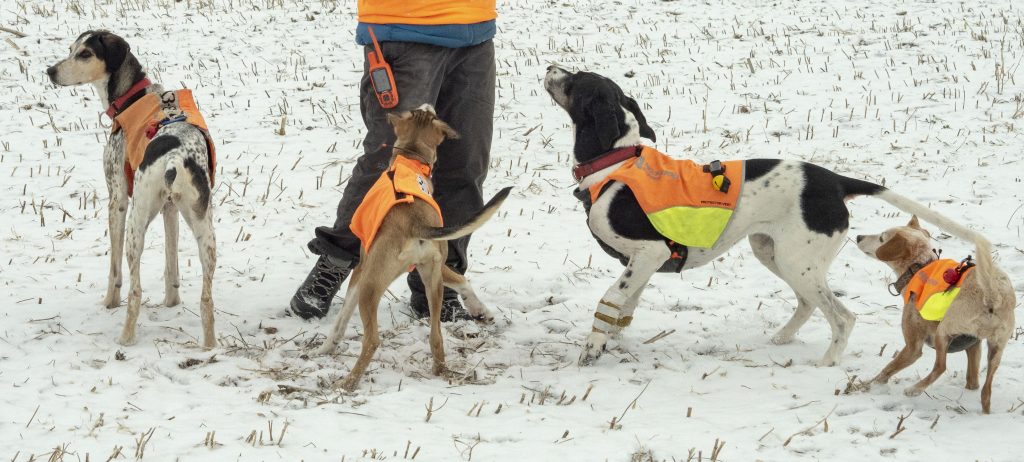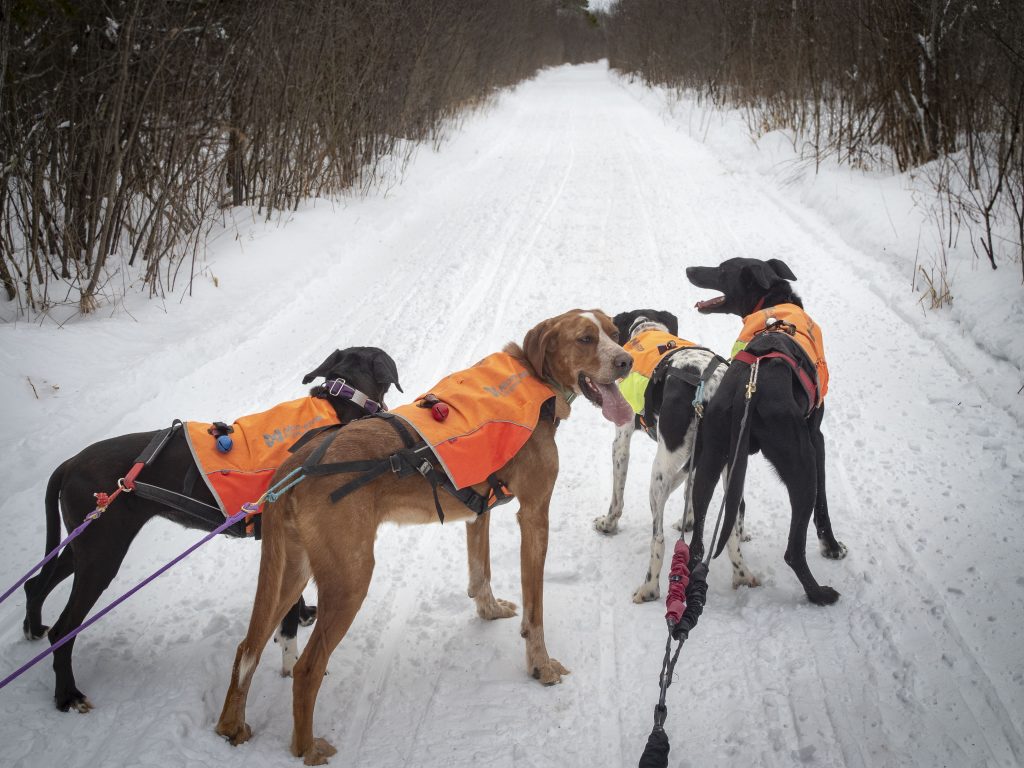While winter is ending the dogs don’t stop running. The snow season is short and we barely have time to get back on our skis that its already time to get the storage wax back on…. or it seems that way.
Skijoring is a lot of fun and we fully enjoy the time we get to ski with the dogs, but we also love dryland sports such as canicross and bikejoring, or with a kickbike you can also scooter with your dog. “Cani-hiking” has also been picking up in popularity with people who may be less comfortable on wheels and not ready to run, or with less energetic and older dogs; this would be with a dog that likes to leans in and pull but at slower paces.
If you have been thinking about trying skijoring and disappointed you missed out on the past season, know that now is the time to start, don’t wait for next winter. I much prefer training my dogs on dryland as I am more stable and have better control on my two feet then I do on my skis. Training a dog requires to set him/her up for success for the task expected and this involves a human in full control.
Before I get on my skis, with my dog in harness I want my dog to have acquired a minimum of behaviors expected from a harness dog.
- I want my dog to be familiarized with the pulling harness and understand it is expected to lean in it to assist my forward motion.
- I want my dog to understand “on by” and/or “leave it” as to ignore distractions (squirrels) and other trail users.
- I want a dog that, despite the fun to come, can wait with a minimum of self control for the command to go (it is very difficult to clip into skis with a over excited dog).
- Ideally you would want your dog to know its left and right (“gee” and “ha”) directions; even though that can take some time with some dogs and you can still get around while your dog is learning.

You will also have some learning to do. You will need to learn how and get used to maintaining a steady tension behind your dog. You will have to learn to communicate efficiently (which with most people means learning to be quiet) with your dog. You will need to learn to maintain a positive attitude even when things don’t go quite as well as you expected and learn to read your dog for potential stress or discomfort. Over all, before you start skijoring, you need to learn to ski. Please read http://rundogs.ca/i-want-to-try-skjoring
Much of the dog behaviors can be learned, practiced and applied in your day to day life, out of harness and then transferred and reinforced in harness. Pulling and running can be, on there own, a positive reward for a dog that already knows the behavior. My dogs respond to my commands because they enjoy there work as running smoothly is just as rewarding for them as it is for me.
To get there though, we did a lot of work (in and out of harness) when I could assist there learning by effectively rewarding good responses and ignore unwanted behaviors. None of that learning happened on skis.
I could carry on with training suggestions, tips to teach your dog to pull, and exercises to ready your dog for harness work, but my point here is that, if you aspire to try skijoring with your dog, the work starts now not at the first snow.
Now its time to order gear. Research harness training, join local groups and start having fun with your dog.




